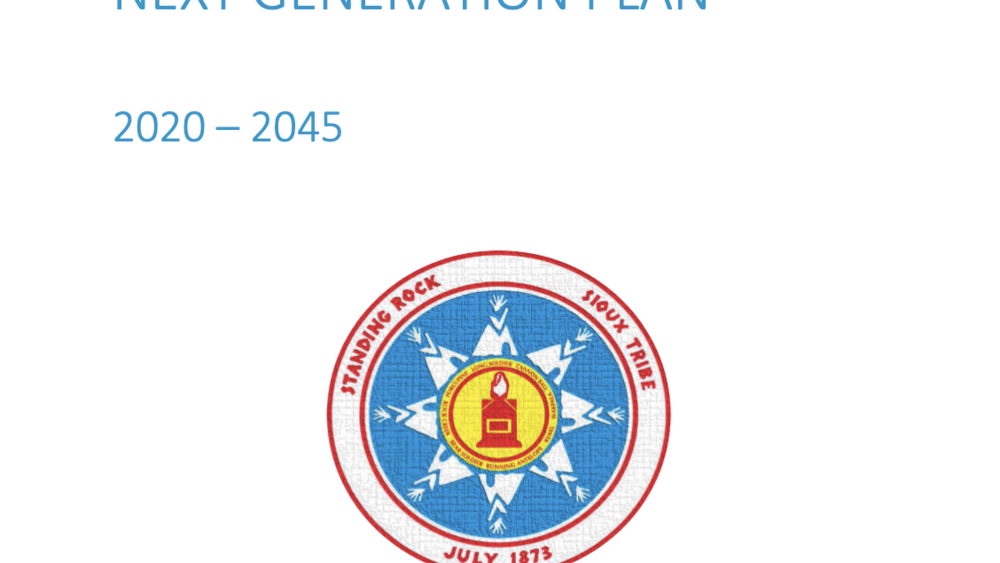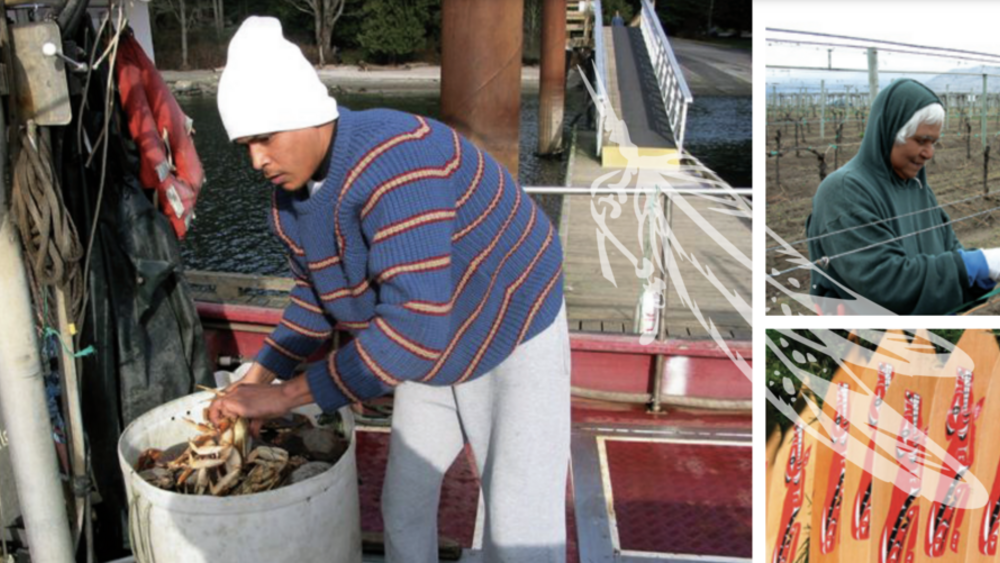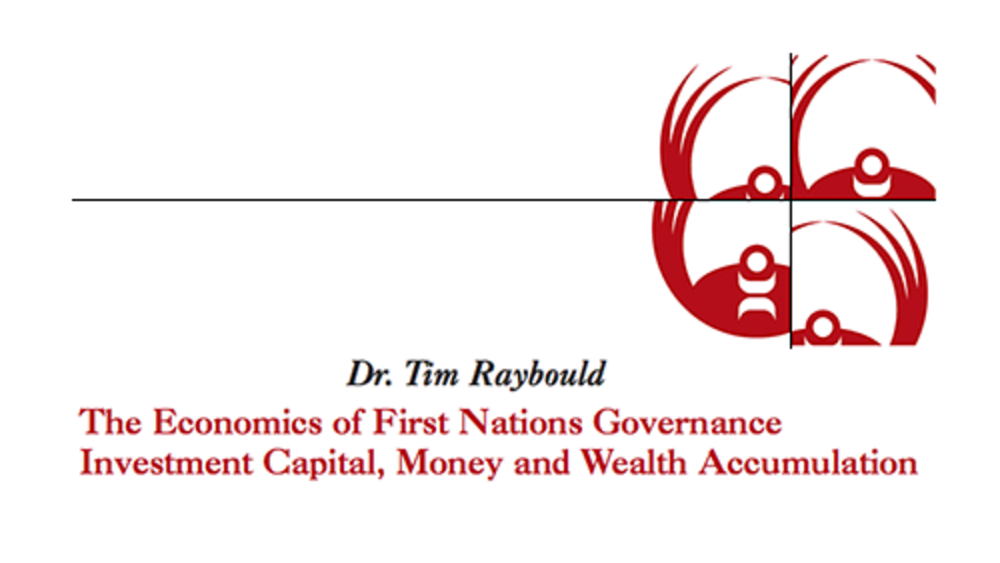Lesley Kabotie (Crow), owner of Kabotie Consulting, provides an overview of the fundamental challenges facing Native nations as they work to rebuild their nations and communities through the development of diversified, sustainable economies on their lands.
This video resource is featured on the Indigenous Governance Database with the permission of Lesley Kabotie and the Bush Foundation.

Additional Information
Kabotie, Lesley. "The Inherent Challenges of Building Reservation Economies." Native Nation Rebuilders Program, Archibald Bush Foundation. Cloquet, Minnesota. July 11, 2012. Presentation.
Transcript
Lesley Kabotie:
"So one of the things when we're talking about nation building that people don't understand is it's really kind of ethereal. It's kind of out here in the universe and big concepts and yeah. But bringing it home, what does that mean to me in my everyday life when I wake up? What does that mean to me? And most of us, hell, even if we're educated we grapple with that. But here's something that I want to share with you that I share with tribal leadership in communities all the time because it's about context and it's about understanding the parameters. When we're talking about nation rebuilding or nation building, what does that look like? And this is about economics. This is particularly about the economic reality that we live in in this country whether anybody wants to be agreeable to it or not, it is the reality. And this is something that is easily replicable and I encourage you all to share this with your communities.
So we have over here the public sector. This is our economy and it's made up of three economic sectors. And over here we have the public sector and at the federal level, this is the federal government, at the state level this is the state government but at the tribal level this is also the tribal government. The public sector is responsible for putting up the infrastructure that allows us to live together as a community: power, roads, water systems, all of those kinds of infrastructure. So this is about the infrastructure. The private sector, and this is the things where our capitalistic society comes from. The private sector concerns itself with the sale of goods and services; we go shopping, the sale of goods and services. So the public sector is financed off of taxation of the private sector. The money derived from the taxes off of this sector are what pay for roads, water systems, all of those kinds of things. Now here's what it looks like in Indian Country. So over here, let me finish this, you have the third sector also called the non-profit sector. The non-profit sector concerns itself with all those things in our community that fall outside the interests of the sale of goods and services and systems. So we have our women and children programs, and our animal programs, our veterans programs, our Boys and Girls Clubs, all of the things that are about the social well being that fall through the cracks that our government can't handle and that private sector doesn't concern itself with. Now here's what this picture looks like in Indian Country and here's why economic development has multiple dimensions that people need to understand. This triangle is what makes the American economy -- even when we throw billions of dollars away -- this triangle is strong, structurally. It's strong. We can throw millions and millions of dollars away but it's triangulated and that's what makes our American economy really strong.
This is what it looks like in Indian Country. Our tribal government, we finance that off of the sale of our natural resources mostly, non-renewable natural resources mostly. So in Crow Country we sell our coal, that pays for our tribal government and our infrastructure such as it is. Our tribal government system is probably financed, I'm going to be really liberal here and say, I'm going to say it's about 65 percent...whoo! This is off of our coal resources. The only taxation we do in Crow Country is off of the development of our TERO taxes, which is every 15 years when the highway gets rehabbed, we're going to tax the heck out of them. That's where our resources are. In my community we have...we used to have a bakery, a bank, a gas station, a restaurant and a hotel. Now we have one lady who sells pop and suckers out of her home to the kids in our community. Our entire tribal reservation economy on the sale of goods and services, I'm going to say we are developed 30 percent and that's being very liberal. This is how much our economy has developed along this spectrum. So when we talk about fragile economies, we talk about the potential collapse, this is in Indian Country where these are. Across our entire reservation, I did a survey, there were historically about 32 non-profits formalized in the last 50 years. Right now active there may be...maybe four. So when we talk about nation building, nation rebuilding, to me it's kind of like the rebuilding element of it is about reclaiming our own sense of sovereignty as individuals. That's where the rebuilding comes back. But when we're talking about nation building, we're still trying to get a handle on this system and to not only control it but to activate it and make it work for us.
So when you're talking about the kind of enterprise that you're talking about, you're talking about using resources from the tribal asset base, which is influence and power to law make, you're talking about creating a nexus here to start driving this to evolve more. There are other opportunities too where tribal leadership may create a nexus here but the objective is to create...in the American system there's a whole...the federal government has given the private sector incentives to donate to the non-profit sector. That's what a 501(c)3 tax status is. It's the federal government saying, "˜Here you go, we can't give you money but we're going to give you this certificate that will incentivize them, go for it, get after them. If they will give you money, we will give them a break.' That's how this works to stimulate the flow of resources through that. Most people can't picture...when we're talking economic growth, they can't picture, and you know as I'm saying this, this is really liberal. Is our tribal economy developed this far? Probably not. The real line is probably maybe down here."
Audience Member:
"And you have coal, many of us don't."
Lesley Kabotie:
"I know. We can't all be Crows. [laughter] I'm sorry. But this is the picture that people have to understand because it eliminates our propensity towards fearfulness and reactive decision making because if you already have the legal structure to facilitate this, you already have the basis for being able to make headway. What you have to make an impact on is people's ability to wrap their head around, "˜What are you trying to make us do?' "˜I'm trying to make you open the gate here and put some resources in so we can start doing this.' Now one of the things that is also an issue here, like for example other nations are considering around the issues of diabetes. Diabetes is killing us. The magnitude of the epidemic of diabetes, if it doesn't get your limbs lopped off so that your quality of life is terrible, our children as young as four and five years old are getting diagnosed. One of the side effects of diabetes is sterility. We're talking about what's the trajectory of our population. We're in a major crisis here. What some other nations are considering is, "˜how do we finance if healthcare comes into tribal sector over here and the cost for care of one diagnosed adult and the subsequent health issues comes up to $900,000 per year for care and we have 10 individuals in our community with diabetes, we already spent our coal money on the care...' What are we going to do when healthcare falls into this? One of the things that is being discussed is, "˜What would it look like instead of taxing cigarettes that we start taxing pop, chips, all the crap that's killing us and we put that money into prevention?' What's the obstacle here? Tribal members saying, "˜What do you mean you're going to tax me? I'm tax exempt.' So most of the hurdles, and we all know this and this is why...kudos to Bush and to NNI to say, "˜We're talking about nation rebuilding, you don't need to just be god at understanding how to move the systems. You better be good at understanding how to move the people because the people will either shut you out or open the door for these systems to evolve the way that they can.' And sometimes it means taking the risk being the innovator and the risk taker to push people to understand this.
I find this simple little drawing far more effective in stimulating the meaningful conversations around, "˜What are we going to do?' We have the power to do this. We have the power to hook up with the Boys and Girls Club and empower them and try and get some more action over here. Sometimes what we see is our tribal government is mistakenly thinking, "˜We're not going to let them get half a million dollars because that's coming away from us.' What they don't understand is that half million will come from people who will never write the tribal government a check, ever, ever, ever. Why are you depriving your children and your veterans and gardeners from access to resources that the tribe will never be able to give them? It's all about context, it's all about context and I find that this is really a helpful graphic in just...people, when you see it right, we're all like, "˜Of course, because it's totally comprehensible. Just show me the stinkin' picture.' And that's what this is about. You can all replicate this and I encourage you to do so."



